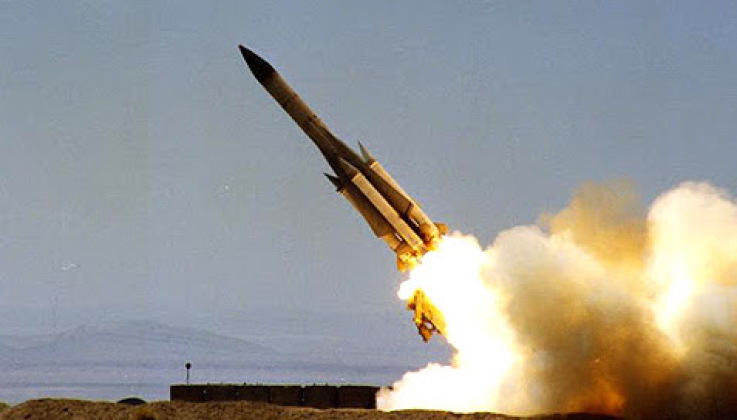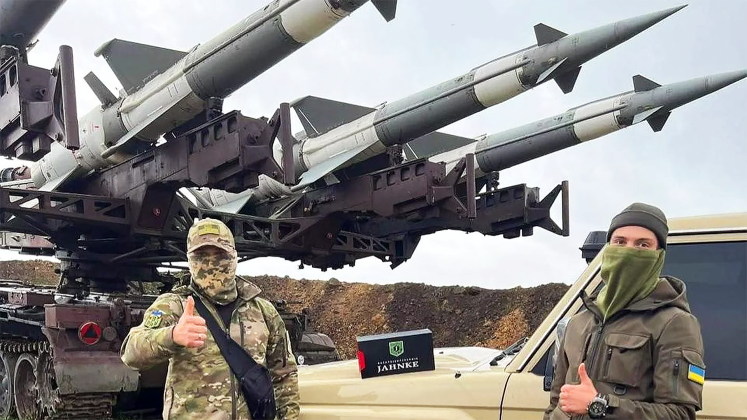News
Has Poland Turned its Top Air Defence System into a Ballistic Missile Arsenal For Ukraine?
On July 16 the Russian Defence Ministry reported that air defences had intercepted two missiles from a Ukrainian S-200 system, which had been fired ballistically against Russian positions. The targets of the strikes were not confirmed. That day also saw three projectiles from the HIMARS rocket artillery system intercepted, as well as 13 Ukrainian unmanned aerial vehicles of unknown designation. The interceptions come a week after Ukraine used four V-880 missiles from the S-200 system to attempt to engage targets on the Crimean Peninsula and the Rostov and Kaluga regions in southern and western Russia, with Russian sources reporting two of these were neutralised using electronic warfare assets and another two kinetically intercepted. While the S-200 formed the backbone of the Soviet Union’s long range air defence capabilities during the 1980s, at a time when existing variants of the S-300 system could only provide medium range defence, the systems were long since reported to have been retired and decommissioned in Russia and Ukraine. They were replaced by the S-300PMU-1/PMU-2 and S-400 in the former, and in the latter were not replaced at all. The reappearance of S-200s, or at least their V-880 missiles, in the Ukrainian service, has raised speculation that the country may have been provided the assets by neighbouring Poland.

During the Cold War the S-200 system was provided to states across the Warsaw Pact to modernise their defences against potential NATO air or missile attacks, with Czechoslovakia, East Germany, Hungary and Poland all receiving the assets. Of these, however, only Poland continues to operate the S-200, which although obsolete in its lack of mobility and its electronics, still has a very high degree of situational awareness and a longer range than any Western system. The S-200 is also used by Soviet successor states Kazakhstan, Turkmenistan and Azerbaijan, as well as export clients in Asia including North Korea, Iran and Syria. Poland has stood out even within the Western world for its hard line position against Russia, which has included calls among senior politicians for Russia’s balkanisation into separate states, and statements by Polish Prime Minister Mateusz Morawiecki that the only way forward for the West was through “fighting” against Moscow. Characterising Russian policymaking as “pure evil,” Morawiecki said that only more extreme economic sanctions would be morally acceptable, stating regarding the impossibility of negotiations: “How many times have you negotiated with [Russian President Vladimir] Putin? You do not negotiate with criminals, you fight them. Would you negotiate with Hitler, Stalin or Pol Pot?” Rhetoric from the country’s leadership has not deviated significantly from this line since early 2022. Warsaw has accordingly been a leading supplier of armaments to Ukraine, although Polish military leaders have repeatedly expressed doubts regarding Kiev’s ability to prevail in the ongoing war. Polish military contractors and paramilitaries have played a very large and growing role in the war in Ukraine, including on the frontlines in Bakhmut and, more recently, in assaults on Russia’s Belgorod region on May 22.

In line with its political position Poland has supplied the bulk of its arsenals inherited from the Soviet era to Ukraine, including S-125 short range air defence systems to bolster the defences of Ukrainian cities. With the country expected to receive Patriot long range missile systems from the United States by 2025, delivering S-200s to Ukraine to place further pressure on the Russian air defence network provides an effective means for Warsaw to effectively dispose of its soon to be retiring assets while supporting the war effort. S-200s are considered optimal for ballistic attacks, as while their V-880 missiles have a 300km range when fired against aircraft or ballistic missiles, if fired ballistically against surface targets they could potentially reach targets closer to 500km away. This is over double the range of Ukraine’s most widely fielded ballistic missile the OTR-21 Tochka. The missiles also carry warheads weighting approximately 220kg, which is very large for an anti aircraft round and allows them to do considerable damage even if fired unguided into an enemy population centre.
Poland has notably not been the only country which may have repurposed S-200s to fire ballistically as the systems are being replaced, with North Korea having done the same with at least a portion of its own arsenal for a show of force aimed at South Korea as it replaces them with indigenous equivalents of the Russian S-300 and S-400 systems such as the Pyongae-5. In the Korean case the S-200’s V-880 missile was fired into South Korean territorial waters in November 2022, while modern Korean-built missiles were fired further out to sea, with the missile being ideally optimised to both send a signal to Seoul, while providing negligible intelligence of value when recovered at sea by South Korean forces.












